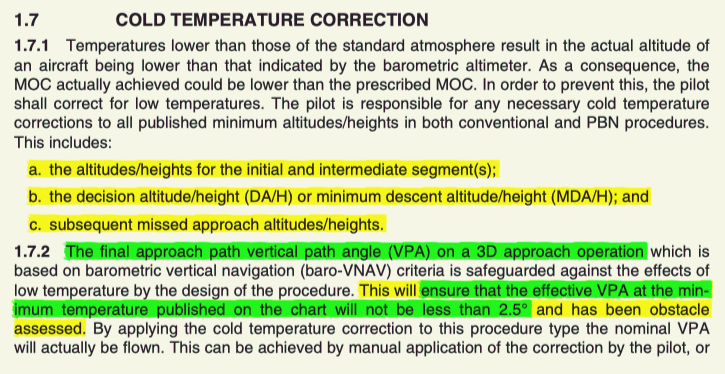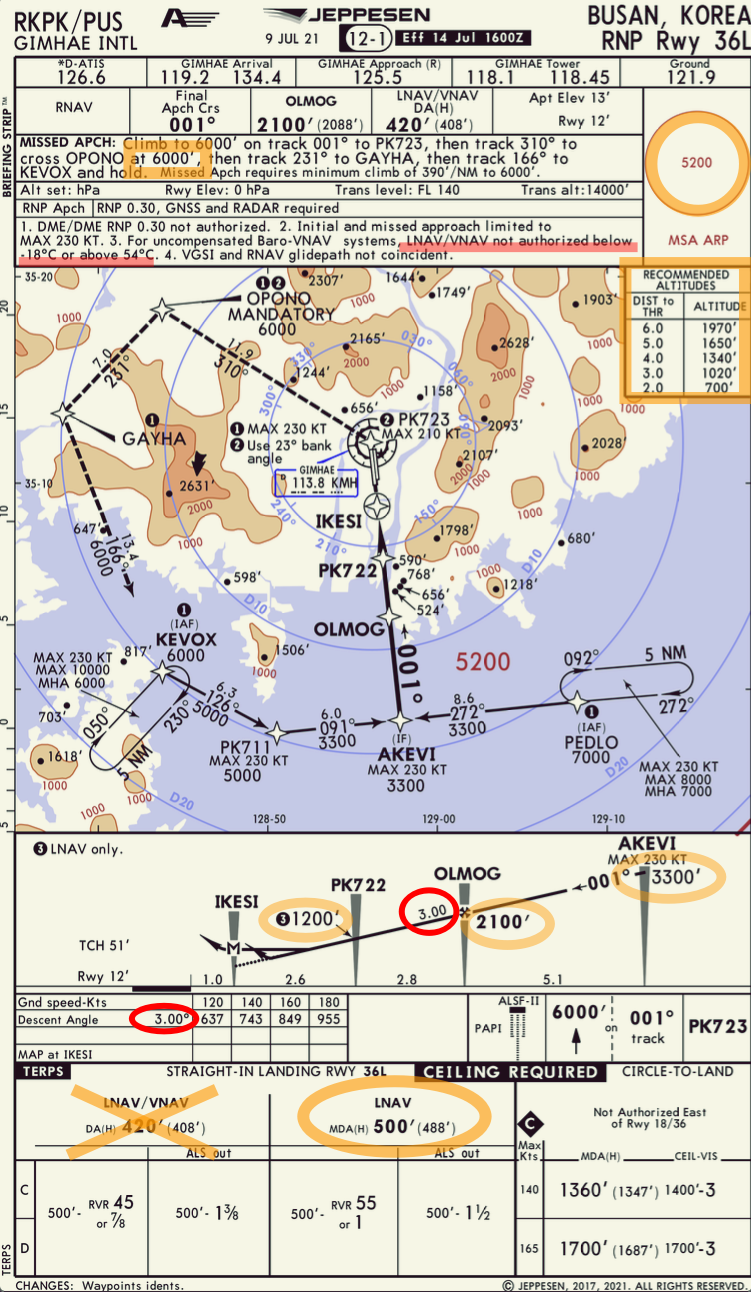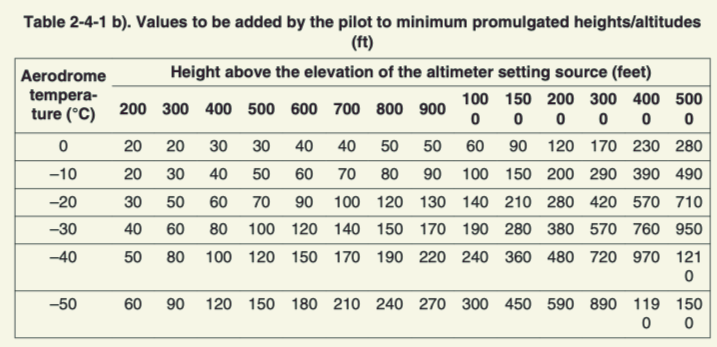Disclaimer:
▪︎This content is Not an official document and does not represent the views of Airbus or any other aviation authority.
▪︎The information provided may be incorrect or misinterpreted and should not be relied upon for decision-making.
▪︎Always refer to official documents and consult with a qualified aviation professional before making any decisions based on the information provided in this blog post.
▪︎The information provided in this blog post is based on personal study and review.
Cold temperature corrections on DOC 8168
According to FLIGHT PROCEDURES - (DOC 8168) - GENERAL REQUIREMENTS,
The pilot is responsible for any necessary cold temperature corrections to all published minimum altitudes/heights in both conventional and PBN procedures. This includes: initial and intermediate segment(s), DA or MDA/H) and missed approach altitudes/heights.

According to the provided information, it states that the final approach path ensures that the vertical path angle (VPA) will not be less than 2.5 degrees and is safeguarded.
Based on this statement, it does not explicitly mention that the pilot must make altitude corrections during the final approach segment due to cold temperature.
In fact, in A320 FCOM normal procedures, it says not to modify the final approach, including altitude constraints.

Of course, if pilots are using ILS approaches, they will follow a specific glide path beam, which means they don't have to worry much about cold temperature corrections as long as they remain on the glideslope. However, they still need to ensure the correct decision altitude (DA) and missed approach altitude are applied. (details differs by regions and companies)
Temp corrections according to FCTM
But at the same time, Airbus FCTM says that the flight crew should consider to apply the altitude corrections on the relevant minimum altitudes (all including FAF, Stepdown altitudes, minima), and on the altitude for the altitude/distance check.

FPA correction needs to be made because the aircraft's Flight Path Angle (FPA) selection is based on ADIRS altitude, not the actual genuine altitude.
Therefore, if temperature correction is applied, the FPA angle also needs to be corrected accordingly. For instance, in the example shown in the picture below, if pilots only follow the charted altitude from the final approach fix without temperature correction, the actual angle the aircraft flies would be less than 3 degrees, even if the pilot selects a 3-degree flight path angle on the Flight Control Unit (FCU). To achieve the actual 3 degree glide path as intended on a standard temperature day, the pilot would need to correct the altitude at the final approach fix and select an FPA greater than 3 degrees. This adjustment will enable the aircraft to fly the desired 3 degree glide path.

Non- precision or RNP approach , Temperature correction. (without F-LOC, GS function)
So, At least for me, it is unclear whether we should apply cold temperature correction on Final approach segment, but if the cold temperature correction is applied on RNP approach or Non-precision approach. there are things to consider. (the approach is not authorized when the temperature is out of charted restriction)
Most of the altitude showing on approach charts needs to be corrected.
- Including Final approach fix altitude, Missed approach altitude, recommended altitude(DIST to THR, etc), MSA consideration, step down altitude etc.
- FPA angle selection on FCU would be steeper than charted angle. and the FPA guidance. (Bird will look different- , when the top of the bird's tail is immediately below the horizon, and the bottom of the "bird" is immediately above the 5 ° nose down marker. - does not apply)

- LNAV/ VNAV minimum and use of Final approach mode is not be used after temperature correction. and LNAV minimum should be used, and using NAV-FPA guidance.

However, it becomes a different scenario when the aircraft is equipped with F-LOC or G-LOC functions, particularly in terms of cold temperature correction.
Cold temperature table
we can find the cold temperature table in FCTM, or we can calculate with flysmart.
Or DOC8168 altitude correction chapter.

Disclaimer:
▪︎This content is Not an official document and does not represent the views of Airbus or any other aviation authority.
▪︎The information provided may be incorrect or misinterpreted and should not be relied upon for decision-making.
▪︎Always refer to official documents and consult with a qualified aviation professional before making any decisions based on the information provided in this blog post.
▪︎The information provided in this blog post is based on personal study and review.
'KNOWLEDGE' 카테고리의 다른 글
| Runway Illusion (0) | 2024.03.03 |
|---|---|
| How to Identify the RNP routes in Jeppesen Manual (1) | 2024.01.21 |
| Contingency procedure in Oceanic and China (2) | 2024.01.17 |
| Don't let the marshaller fool you (0) | 2023.11.16 |
| RNAV approach and RNP approach Chart Naming (0) | 2023.06.03 |



